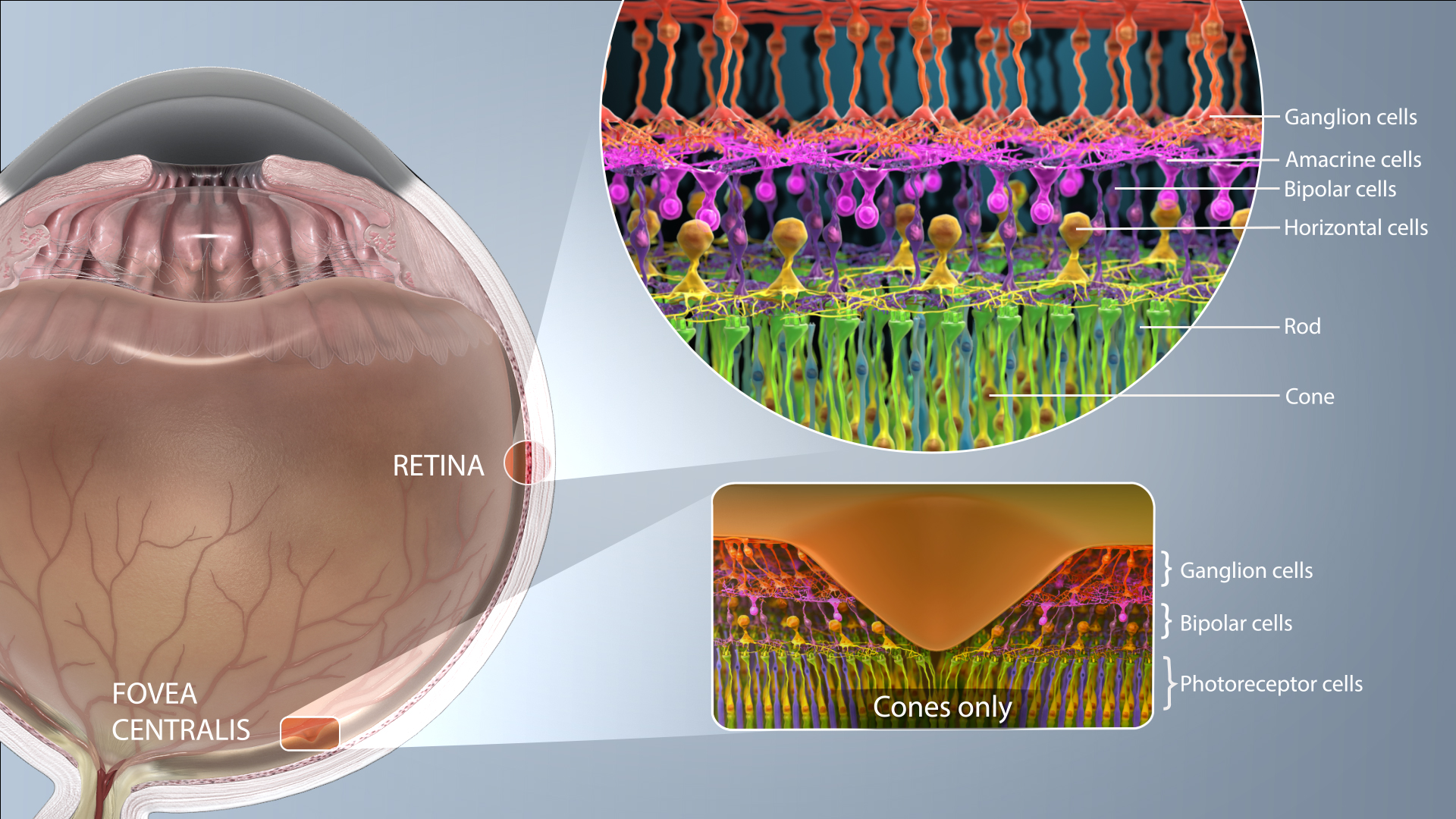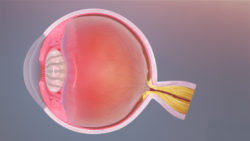
Medical Animation still showing the cells inside retina
- Iris is the part that is colored
- Cornea is a transparent dome over the iris
- Pupil allows the light to come in and is the black colored circular shaped opening in the iris
- Sclera is the white colored part of human eyes
- Conjunctiva is the lean tissue layer that covers the whole front part of the eye, not including cornea
- Macular Degeneration (age-related): Causes deterioration of the central vision as one ages.
- Amblyopia: This condition begins in childhood. The vision in one eye is greater than the second one which makes the brain prefer that eye. The weaker eye is named the “lazy eye”.
- Astigmatism: In this condition the issue is with the curvature of cornea. In this condition the eye finds it difficult to focus light onto the retina in the desired the way. This results in blurry vision which could be fixed by contact lenses, glasses or surgery.
- Black eye: This is the discoloration or swelling around the eye due to a face injury.
- Cataract: In this condition, one experiences blurred vision due to clouding of the internal lens of the eye.
- Conjunctivitis: In this condition, the conjunctiva gets inflamed or infected which results in “pinkeye”. This often happens due to allergies, bacterial and viral infections.
- Corneal abrasion: This is a scratch on the clear part of the eye’s front. The common symptoms are light sensitivity, pain in the eye.
- Diabetic retinopathy: The blood vessels in the eye are damaged by high blood sugar and it overtimes starts to affect the vision.
- Diplopia (double vision): This is a serious condition that results in seeing double.
- Glaucoma: This condition happens due to increased pressure in the eye and creates vision loss over time.
- Hyperopia (farsightedness): There is difficulty in clearly seeing the near objects. The eye is “too short” for the lens to focus light properly on the retina.
- Myopia (nearsightedness): There is difficulty in clearly seeing the far objects. The eye is “too long” for the lens to focus light properly in the desired way on the retina.
- Optic neuritis: In this condition there is inflammation of the optic nerve mostly due to an overactivity in the immune system. There is vision loss and pain in one eye as a result usually.
- Retinitis: In this condition the retina gets infected or inflamed. It may be due to some infection or from a genetic condition developed over years.
- Scotoma: In this condition the visual field has a dark spot.
- Strabismus: In this condition the eyes don’t point in the same direction.
References:
- https://www.webmd.com/eye-health/picture-of-the-eyes#1
- https://www.webmd.com/eye-health/picture-of-the-eyes#2

Ophthalmology: Understanding How The Eye Works
Of all the specialties of medicine, ophthalmology keeps evolving on a regular basis. Read More..








